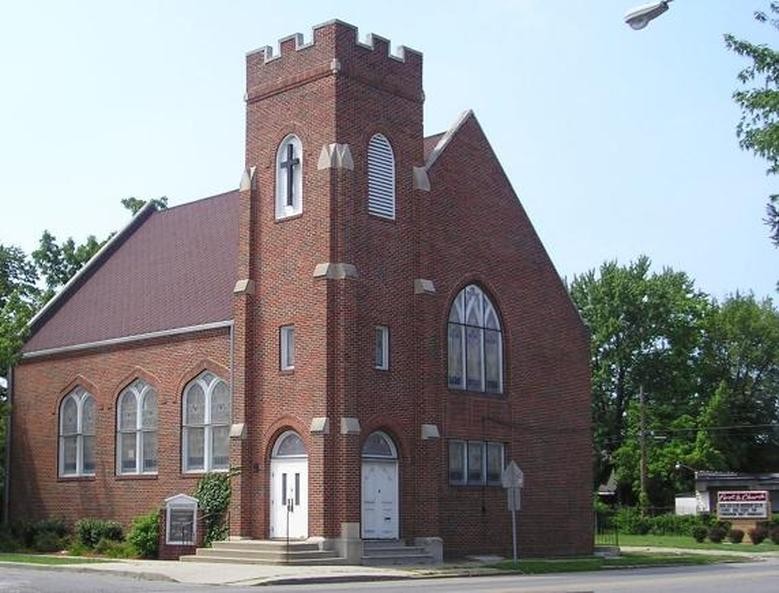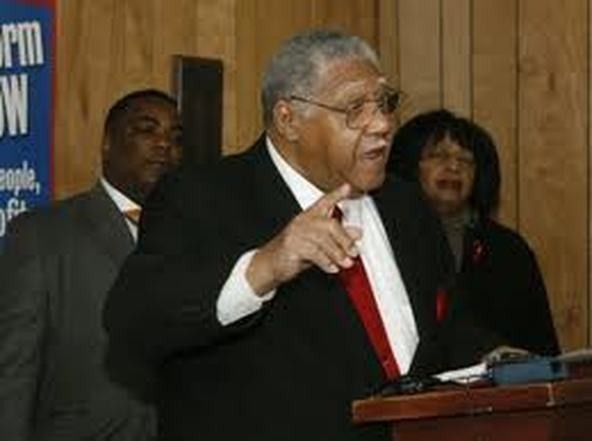First African Methodist Episcopal Church
Introduction
Text-to-speech Audio
First African Methodist Episcopal Church is the first historically Black church to be located on the city's east side. It is located on what is now the corner of Eddy and Campeau streets. The neighborhood was predominantly white when the church was founded in 1907.
Images


Backstory and Context
Text-to-speech Audio
Founded in 1907, First African Methodist Episcopal Church was the first African American church on the predominantly white, east side. It grew out of Olivet A.M.E. Church when several families decided to start another church. In the late 18th and 19th century, Olivet A.M.E. was the only church for African Americans, who traveled a great distance to attend. At an Annual Conference, the Rev. A.M. Taylor was appointed to serve as Olivet’s pastor. At a later conference, Taylor was assigned to another church. But liking South Bend and its people, he refused the appointment.
In 1907, dissension arose between Taylor and several of his members. After much discussion Taylor, his wife and five children, and a few faithful members (including W.C. Franklin and family, Mrs. Nanie Crittendon and daughters, the Cooksey family, Charles and Eva Calloway, Eva Higgens, and Mr. Hoad) decided to band together and start another church on the east side of South Bend. They purchased an existing house structure on the corner of Eddy and Campeau streets and named it Taylor’s Chapel. In 1922, Rev. Buford Gordon was appointed to serve as pastor of Taylor’s Chapel. A campaign to raise money for a new building was started in 1923. Construction began in August 1924, and was completed in 1925, for a cost of $40,000. The church was officially dedicated on Feb. 25, 1925. The congregation was composed of 130 members. The speech at the dedication service was titled “The Christian Approach in Race Relations.”
Because the church was being built in a predominately white area, some whites enlisted the assistance of the Ku Klux Klan in devising devious ways to stop the construction. Because of the ensuing damage to the building and actually knocking down a wall, Gordon and members kept all-night vigils to protect the church. After their defeat at the church, the Klan tried to organize a march in downtown South Bend. Students from the University of Notre Dame had warned the Klansmen not to parade. The parade was started, but broken up by the students who assaulted the Klansmen by throwing them out of buildings where they ran to hide. Some were even thrown into the St. Joseph River.
In 1907, dissension arose between Taylor and several of his members. After much discussion Taylor, his wife and five children, and a few faithful members (including W.C. Franklin and family, Mrs. Nanie Crittendon and daughters, the Cooksey family, Charles and Eva Calloway, Eva Higgens, and Mr. Hoad) decided to band together and start another church on the east side of South Bend. They purchased an existing house structure on the corner of Eddy and Campeau streets and named it Taylor’s Chapel. In 1922, Rev. Buford Gordon was appointed to serve as pastor of Taylor’s Chapel. A campaign to raise money for a new building was started in 1923. Construction began in August 1924, and was completed in 1925, for a cost of $40,000. The church was officially dedicated on Feb. 25, 1925. The congregation was composed of 130 members. The speech at the dedication service was titled “The Christian Approach in Race Relations.”
Because the church was being built in a predominately white area, some whites enlisted the assistance of the Ku Klux Klan in devising devious ways to stop the construction. Because of the ensuing damage to the building and actually knocking down a wall, Gordon and members kept all-night vigils to protect the church. After their defeat at the church, the Klan tried to organize a march in downtown South Bend. Students from the University of Notre Dame had warned the Klansmen not to parade. The parade was started, but broken up by the students who assaulted the Klansmen by throwing them out of buildings where they ran to hide. Some were even thrown into the St. Joseph River.
Sources
Civil Rights Heritage Center. African American Landmark Tour. 2013. . https://www.iusb.edu/civil-rights/african-american-landmark-tour/Zion%20Church.php.
